#leek soup diet
Text
#14 day rapid soup diet#14 day rapid soup diet review#14 day rapid soup diet recipes#14 day rapid soup diet reviews#14 day rapid soup diet recipe#soup diet#leek soup diet#soup diet recipes#lose weight soup diet#soup diet for weight loss#weight loss soup diet#soup diet weight loss#soup diet to lose weight#fat burning soup diet#7 day soup diet#soup diet plan#2 week soup diet#soup diet results#2 week soup diet results#detox soup diet
12 notes
·
View notes
Text
Grateful to soup even when i passively loathe it for being the only thing i can eat it is a joyful thing
#bf helped prep ingredients while i have instructions- blended the french onion soup into a thick base and added white beans potatoes leeks#and i added paprika ras el hanout garlic and some other misc bits#and cooked it down into a stew so its heartier and more filling#found some sturdy bread in the fridge thats diet appropriate enough#its not perfect but its enough for my freezing exhausted corpse
4 notes
·
View notes
Text

Analysis of the Food/Diet of the Lower Class in the Victorian era
(It was a bit tricky for me to find sufficiently detailed answers about the time and group I was looking for, as I wanted a bit more than the basics. Apologies for any mistakes)
Bread was a staple of the lower-class diet, such as wholemeal, rye bread, unleavened bread (like oatcakes), etc.. For the poor, it was often made of cheap-quality flour and likely denser than modern bread.
These could be supplemented with whatever vegetables that were cheapest as well as locally available at that time of year. Onions were among the cheapest (half penny for a dozen, cheaper if they were bruised) and available all year. They were more expensive in late spring, at which point they could be substituted by leeks. Watercress was another cheap staple (halfpenny for 4 bunches from April to January/February) and were regularly eaten at breakfast. Cabbage was cheap and easily available, along with broccoli, with lettuce and radishes available in summer. Carrots and turnips were inexpensive staples, especially in winter, and they along with cabbage were often used in stews and soups.
As for fruit, apples were the cheapest and most commonly available (from August to May). Cherries were also fairly cheap (from May to July). Pears, blackberries, and plums were available throughout autumn. Then there were gooseberries, plums and greengages (in late September), raspberries, and strawberries. Not all fruits were affordable, like oranges, which were imported from Spain in winter but were expensive and often given as gifts, and pineapples, which were a sign of wealth.
Potatoes were another staple and were prepared in various ways, including boiled, mashed, roasted, or fried. They grew well in Britain’s mild weather, making them easy to produce and sell, meaning they were cheap and thus became a frequent meal.
In terms of meat, the lower class ate it infrequently, maybe once a week, with the worst off even less often. Pork was 1 of the most common types of meat, when it could be afforded.
As a result, the poor made the most of it (using and eating every part of it). For example, a cook would boil a piece of beef or mutton with vegetables one day (probably Sunday, the only day many people had off from work), then return to the boiling pot the next day and skim the fat off from the top to be used for frying or pie crusts. Then he or she could set the liquid back to boiling, adding a stingy amount of oatmeal (one recipe recommends a tablespoon of oatmeal for every pint of liquid) to produce another nourishing meal from the broth. Recipes call it a pot liquor soup; we’d more likely call it gruel.
Gruel, made by boiling grains, like oats, rice, or barley, in water or milk, was a common food option for the poor as it required minimal ingredients and was easy to prepare. It often served as a breakfast or basic meal.
Porridge refers to a thicker and more substantial version of cooked grains, usually oats, in water or milk. It was typically cooked for a longer amount of time, resulting in a creamier and heartier consistency. It was also a popular breakfast choice due to it being nutritious and filling.
They tended to buy cuts and trimmings of meat no one else wanted, which were referred to as “block ornaments”. Examples included sheep’s organs, shanks, gristly bits, and heads. Most of these cuts were tough or didn’t have much meat on them, but they could produce a filling broth. Tripe (lining of stomach of animals like cattle, sheep, and pig), liver, meat on the bone (shin or cheek), and offal (aka organ meats like brains, hearts, sweetbreads, liver, kidneys, lungs, and intestines) were also cheap.
Chicken was rare, as the birds were kept for eggs, and usually not eaten unless the bird stopped laying eggs.
Later in the Victorian era, bacon became a popular choice at breakfast (alongside kippers aka a type of fish made from herring, eggs, and porridge).
Drippings was another common part of the lower class diet. Drippings refer to the fat that is collected as a result of cooking meat. When meat, such as beef, pork, or poultry, is roasted or grilled, the fat present in the meat melts and drips down into the pan or tray. This fat is then collected and saved, typically in a container or jar, for later use. They add flavor and richness to dishes and are commonly used for making gravies, sauces, or to enhance the flavor of roasted vegetables, as a few examples.
Since meat was a luxury, the lower class tended to go for cheaper proteins, like eggs and legumes.
Many East End homes kept hens in their backyards, with a couple hens able to produce up to a dozen eggs per home per week. Hard cheeses like cheddar was produced countrywide and so available all year round, meaning it was able to enter the diet of the lower class. It was a good protein, kept well, and even stale it could be eaten toasted with bread.
Regarding legumes (ex: beans, peas, peanuts, lentils, etc…), they were a cost-effective source of protein, fiber, and nutrients. Dried legumes were more affordable and available all year round. Beans (good from July to September) were a staple for many lower class, often cooked in stews, soups, or baked dishes. Peas (affordable from June to July) and lentils were also commonly consumed.
In terms of drinks, tea was very common. It became more affordable with the help of increased trade, improved transportation, and advancements in production methods. The poor drank tea that tended to be weaker, as they reused the tea leaves several times before disposing of them. Black tea was common, the most popular being those imported from countries like China and India.
Milk was widely consumed but not usually in large quantities, due to cost and adulteration fears (aka fear of contamination). Beer was also common (made with low alcohol content so you didn’t get drunk), even for women and older children, as water wasn’t safe to drink back them (easily contaminated, but the brewing process killed off the germs). Coffee was another option, but it tended to be more expensive than tea, beer, or milk.
Sugar became cheaper at least after 1874, but still tended to be relatively expensive, especially for those on lower incomes. Thus it remained more of a luxury item and consumed in mostly smaller quantities or for special occasions.
Butter, like sugar, would’ve also been considered a relatively expensive item, and thus not as widely consumed. Instead, they used cheaper options of fat, like lard and dripping.
Nuts were another slightly more expensive item. But there were some options if a poorer individual could afford them. Chestnuts were the most common (favorite street snack in chestnut season, running from September to January). There were also filberts and hazelnuts (available from October to May) and walnuts (seasonal). Imported almonds and brazil nuts were more expensive, but commonly consumed around Christmas as a “treat”.
Even if they could afford things like sugar, butter, or nuts, the lower class likely would’ve typically used their income on more basic necessities and things they needed for their job or life.
Individuals were paid on Saturday, and that plus the absence of refrigeration affected the weekly menu. It’s possible the lower class at least may have possessed basic cooking utensils, like a skillet, pot, or kettle. The ‘best’ and relatively most expensive meals were taken on Saturday evening and Sunday, though the poorest would often buy food at the end of Saturday trading, at the cheapest possible prices. Menu choices became cheaper through the week: purchases of food would diminish in quantity as the food budget shrank, and meat would often only be purchased once a week, though vegetables and fruit were usually purchased and consumed on a daily basis.
The very poor might purchase cheaper older fruits, vegetables, and meat on the verge of edibility, though this didn’t really diminish the nutrients in them much.
The lack of refrigeration facilities meant that meats eaten hot on any one day were almost inevitably consumed (cold) on the second day. Any more leftovers were, due to incipient spoilage, curried or hashed on the third day. Spices and the higher heat involved in frying the hash would disguise any taint to the meat and lessen the chances of food poisoning.
Men worked on average 9–10 hours per day for 5.5-6 days a week, giving a range from 50–60 hours of physical activity per week. Factoring in the walk to and from work increases the range of total hours of work-related physical activity up to 55–70 hours per week. They likely required around 5000 calories a day.
The daily wage for poor miners back then may have been around 3-4 shillings, with the weekly wage then around 18-24 shillings. In dollars, 3-4 shillings was likely around $1. In today’s money, 3-4 shillings a day may be around £4 to £5 or $5 to $6.
#idv#identity v#norton campbell#prospector#fool's gold#fools gold#hunter norton#idv norton#identity v norton#idv prospector#identity v prospector#idv fool's gold#identity v fool's gold#idv fools gold#identity v fools gold#sirenjose analyses and theories
151 notes
·
View notes
Text
A Bagginshield Cookbook
Recipe #2
Leek & Potato Soup

Although Thorin, like all Dwarves, is fond of meat in most forms, one of his favorite comfort foods is Leek & Potato Soup. He developed a taste for it after he and his people settled into a simple life in the Blue Mountains, where it was discovered that wild leeks were plentiful in the woods that surrounded the foothills. Potatoes, of course, were already a staple of the Dwarven diet, being easy to both grow and store.
When Bilbo learned of Thorin's love of the soup, he let him in on his cousin Mirabella's "secret" recipe (known to only a few dozen family members, friends, and neighbors... as well as the owner of the Golden Perch Inn, the Butturbur family of Bree, and the librarian of Brandy Hall). Mirabella's version was, of course, made with larger and milder cultivated leeks rather than the spicier ramps, and so she included onion in the recipe to add a bit more depth of flavor.
The soup quickly became an often-shared simple supper for Thorin and Bilbo on cool evenings, usually accompanied by a loaf of warm bread for dipping.
------
This makes a fairly large batch, enough even to feed my family of seven! It should be easy enough to halve, though. Please feel free to take the recipe and distribute it as you like; no credit is necessary.
Leek & Potato Soup
4 Tbsp butter
6 cups cleaned and sliced leeks
2 cups diced onion
5 lbs (about 12 cups) peeled & diced potatoes
8 cups chicken broth
1 1/2 cups cream, milk, or evaporated milk
Salt, pepper, & green onions
Melt the butter in a large pot over medium heat, then sauté the leeks and onions for about 10 minutes or until soft. Add the potatoes and broth. Bring to a boil over medium-high heat, then reduce to low and simmer for about 20 minutes or until the potatoes are very soft.
Add the cream, milk, or evaporated milk. You can either leave the soup chunky, partially mash it, or (as I prefer) blend until smooth with an immersion blender.
If you like, season with salt, pepper, and green onions.
------
(Check out my "food" tag for more recipes. There's not much yet, but there will be soon!)
173 notes
·
View notes
Note
Harrowhark propaganda: listen you (the person reading this) are sleepy. I am sleepy. We are all so incredibly sleepy. It is the tragedy of the human condition that we are all so so very sleepy all of the time. But harrowhark? Harrowhark is that sleepy and MORE. This girl lives on a cave in pluto. She does not see sunlight ever. She lives on a diet of snow leeks and gruel, but she refuses to eat anything with flavour so it’s probably just the gruel. She is deficient in every nutrient ever. On top of that, if she overuses her powers she will start bleeding, first from her nose and then from every pore in her body. And she is ALWAYS overusing her powers. She has been running the entirety of plutos society since she was 12, while simultaneously puppeting around both of her parents dead bodies so that nobody knows they are dead (a feat that normally takes multiple necromancers. She’s been doing it herself for years). She is doing the jobs of at least seven adult people and has been since she was a pre teen, all while managing hallucinations and nightmares. She is so anaemic. She is so incredibly anaemic. And that’s just how she is at the start of book one! She gets so much sleepier. She tries to singlehandedly work out the puzzles needed to ascend to sainthood, staying up for days on end to do so, and overworks herself until she passes out in an egg made of bone and then she gets mad when she’s told she needs to rest. She ascends to sainthood and gives herself a lobotomy which results in her having back to back brain aneurysms. Then, she ALTERS HER OWN BRAIN CHEMISTRY SO SHE DOES NOT GO TO SLEEP FOR SIX DAYS, in an act that makes her feel like putting her own bone marrow in some soup so she can materialise a skeleton in someone’s digestive system at dinner with god was an effective murder plan. You (the person reading this) are sleepy. I get that. Harrowhark is sleepier. If it wasn’t for her body physically passing out at a certain point harrowhark would never sleep, no matter how sleepy she got because that is valuable time she could be using to overwork herself and reach levels of burnout previously unheard of.
.
25 notes
·
View notes
Text
The food list :
🍓🍓🍓🍓🍓🍓🍓🍓🍓🍓
FRUIT: apple ( 1)/ tangerine/ strawberry/ melon/ watermelon/ raspberry/ pineapple/ kiwi/ ( apricot/ cherry) / grapes
🥦🥦🥦🥦🥦🥦🥦🥦🥦🥦
VEGETABLES: ( almost at will )salad/ celery/ cucumber/ tomato/ spinach/ cauliflower/ broccoli/ eggplant/ green beans/ zucchini/ kale/ pepper/ carrot ( moderate) / Konjac all the way/ Macedonia/ pickles/ gherkins/ onions/ leek
🥣🥣🥣🥣🥣🥣🥣🥣🥣🥣
SOUPS: everything under 130cal-> with veggies if less than 100cal, otherwise consider it a vegetable portion.
🌽🌽🌽🌽🌽🌽🌽🌽🌽🌽
VEGETABLES/ ENERGY (avoid if little exercise, otherwise small quantities): chickpeas/ corn/ peas/ lentils
🥫🥫🥫🥫🥫🥫🥫🥫🥫🥫
SAUCES: sauces 0cal ( Caesar/ ketchup/ chili)/ balsamic vinegar/ lemon/ spices and herbs/ tomato coulis if low cal ( no more than 30cal per 100g) with harissa / yogurt 0 ( see yogurt) / tomato sauce ( to be studied according to meal, less than 100cal the whole)
🍳🍳🍳🍳🍳🍳🍳🍳🍳🍳
PROTEIN: turkey breast / chicken slices / turkey / canned tuna / shrimp (expensive) / egg / meat less than 150cal per 100g with low fat content
YOGURTS: white 0% / protein less than 150cal per jar (for short runs of at least 6k in a day)/ 200g jar (for icing, why not? for runs over 12k) with flavorings
🥛🥛🥛🥛🥛🥛🥛🥛🥛🥛
DRINKS: coffee/ tea/ water/ almond milk 0sugars/ drinks 0cal/ Monster ( limit to 1/d)
🍹🍹🍹🍹🍹🍹🍹🍹🍹🍹
ALCOHOL: tolerated 150cal/day if more, compensate by sport ( I like to go to see the sunset with little drink )
🍨🍨🍨🍨🍨🍨🍨🍨🍨🍨
PLEASURE FOODS ( if you keep the diet the first week without cracking once ): halo ice cream top/ see if less than 400cal with lots of sport
After that maybe twice a week coz 🍨🫰
Also water ice cream like Mister freeze (50cal one) when weather hot
🦶🦶🦶🦶🦶🦶🦶🦶🦶🦶
Walking: EVERY DAY
Running: 30-40k/week
Always planck + ex legs 5min morning&night +abs morning
Mini 15k steps
🚰🚰🚰🚰🚰🚰🚰🚰🚰🚰
2L of water
( for me: decrease and stop l@xs)
🦋🦋🦋🦋🦋🦋🦋🦋🦋🦋🦋
Starting weight 12/04: 49kg
( no comment)
Target weight 01/05: 46kg
( make discipline come back)
Goal 1: 12/05: 45kg
Goal 2: 20/05:44kg
Goal 3: 30/05:43kg
Goal 4: 10/06:42kg
Goal 5: 01/07: 41kg
Goal 6: 15/07: 40kg
🦋🦋🦋🦋🦋🦋🦋🦋🦋🦋
RULES (net):
- 650cal/ day ( net, run 50cal/km, walk 100cal/3km)
- ok if under 1000cal otherwise ❌ faim, start again for the reward
- stay focused on other stuff
- sunset see everyday
- if binge, fail but stay focused on the objective !!!!
- i don’t want emotional binge anymore
I want Ana bones and sun
4 notes
·
View notes
Note
I was planning to make a big batch of my favourite soup today. I did so. But I also bought good quality white bread, toasted it, and served it with a thick layer of homemade leek & garlic compound butter, to go with the soup. It was delicious. And it was because I have been following your blog that I did this, so thank you.
this makes me. so happy to hear. thank you. for incorporating toast into your diet. it really warms. my heary.
4 notes
·
View notes
Text
i'm super stoked for the doing groceries simulation thingie i just did so i wanted to share it with yall :) once again it proves how eroski is the superior supermarket!!
so the way i do these is i make a menu for each meal in every day of the week, and randomly select what i'll be eating based on a balanced diet and personal preference. i also add snacks for breakfast and merienda / almuerzo, and on sundays i thought it would be fun to pick a random dish from taste atlas to make so i can practice my cooking skills!!!
obvs when i finally move out and this becomes a reality it'll be a bit different, as i probably won't have to buy everything from scratch and will have to adapt to what i have, and also most likely i'll eat out sometimes. but this is just for fun so that doesn't matter lol
anyways, here would be what i'd eat in that week from what i could buy in the grocery shop (in this case eroski, you'll see the brands and everything)

and below the cut you'll find the translation into english :)
MONDAY:
-Lunch: Sausages
-Dinner: Cheese fondue
TUESDAY:
-Lunch: Chickpea soup
-Dinner: Omelette
WEDNESDAY:
-Lunch: Sea bass with asparagus
-Dinner: Falafel
THURSDAY:
-Lunch: Lasagna bolognesa
-Dinner: Omelette
FRIDAY:
-Lunch: Leek and potato soup
-Dinner: Pizza (made at home, I'd buy the dough and everything)
SATURDAY:
-Lunch: Rice
-Dinner: Veal gyozas
SUNDAY:
-Lunch: Shepherd's Pie (it's an English dish I think)
-Dinner: Bread with olive oil and jamón (the most typical Spanish dinner ever lol)
OTHERS:
-Campurrianas cookies with chocolate chips
-Roasted peanuts in the shell
-Sobaos
-Chocolate ice-cream cones
-72% Chocolate with cocoa chips
-Jamón flavored Ruffles
9 notes
·
View notes
Text
Cuisine of the Hisuian People
Part of the Sinnoh Historical Society Digital Records
Brannon Yousuke
Journal of Sinnohan Anthropology, vol. 4, no. 13.
Contrary to popular belief, the food of modern day Sinnoh bears little resemblance to the food eaten by the residents of Hisui. Much of what is considered Sinnohan cuisine is actually a variation on Johtonian, Kantonian or Hoennian dishes brought by the settlers from the Galaxy Team, and very few Hisuian influences remain in the culinary culture.
While fish is a common component in both Sinnohan and Hisuian food, the Hisuian people would never have eaten something like sushi or sashimi; meat of any kind was always cooked in some way, typically by boiling, curing, or roasting. Basculin meat was favored above all, although Magikarp, Barboach and Remoraid were also commonly caught and consumed. In addition, the people of the Clans would hunt many terrestrial Pokemon as well, with the Starly evolution line, Stantler, the Buneary evolution line, the Swinub evolution line, and even the Teddiursa evolution line featuring commonly on the dinner table. While meat was a heavy component to their diets, they were also known to farm and forage for berries, beans, grains, mushrooms, radishes, and a variety of roots and herbs.
One major way in which Hisuian cuisine differs from Sinnohan cuisine is the choice of seasonings. The modern day Sinnohan is likely to enjoy a miso soup, served alongside something prepared with soy sauce, and likely at least some form of added sugar. The first two of these things do not appear at all in Hisuian cuisine, and while the clans would sometimes sweeten their foods with berries or honey, it was nowhere near as common as it is in modern day Sinnoh.
Thanks to the meticulously kept records of Warden Nobori, of the late Hisuian era, the academic community has many accurate descriptions of common dishes enjoyed by the Hisuian people, and extends its thanks to him in this regard.
The food written about most frequently by Warden Nobori was cured meat, known as either satcep for dried fish or satkam for other forms of dried meat, which seemed to feature especially heavily in the diets of both the Pearl Clan and the Wardens at large. Meat would be cured using the three main ingredients of "salt, smoke and sunshine [1]" in addition to whatever other spices the cook may favor. By preserving the meat in this way, it could last for six months, allowing the clans to survive the harsh winters of Hisui.
Another common winter dish was citatap, a name translating as "that which has been pounded." The remains of fish from preparing other dishes are taken and pounded in a method not dissimilar to Johtonian tataki. This paste is then flavored with some form of green onion or chive, and finally seasoned with salt and dried kelp. This preparation was particularly favored for older, tougher cuts of meat, as the process of pounding it naturally made it much more palatable. This paste could be kept and eaten for several days, especially in the winter when the cold weather would prevent it from spoiling.
Citatap was commonly used as an addition to another common meal, known as ohaw. Rather than following a specific recipe, this soup is simply made by combining whatever ingredients are at hand, although it is generally agreed upon that the use of bone stock is a necessity. Due to its versatility, ohaw had many forms, even being one of the few dishes to utilize the notoriously bitter anna-ambe pukusa, or healthy leek, in a meal known as pukusa ohaw. In the modern day, it is considered a rite of passage among scholars studying Hisui to try pukusa ohaw, following the loose guidelines left in the journals of Warden Nobori, although outside of this practice, very few families in Sinnoh frequently eat traditional Hisuian cuisine.
[1] Klio Mizuki, The Journals of Warden Nobori: A Glimpse into the Mundanities of Hisuian Life.
12 notes
·
View notes
Text
Astrological Weekly Menu


For those days when you’re just not sure what to eat, here is a list of foods to enjoy that are connected to the planetary inspirations of our days of the week. These correspondences can help you tap into the energy of that day and manifest your intentions.
Monday
Ruling planet: The Moon
Foods that honor the moon are cool, creamy, or round:
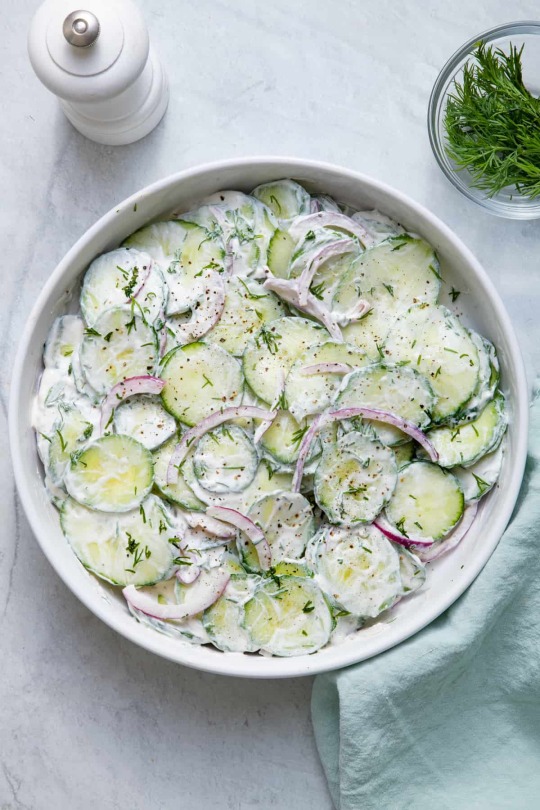
Cucumber Salad or Sandwiches
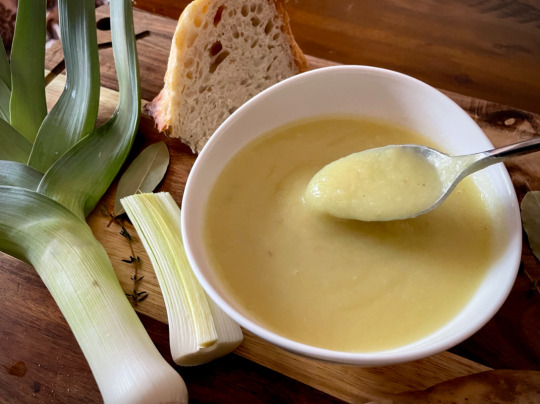
Potato Leek Soup

Mushroom Alfredo with Peas
Tuesday
Ruling planet: Mars
As the red planet and associated with war, hot and spicy is the way to go:
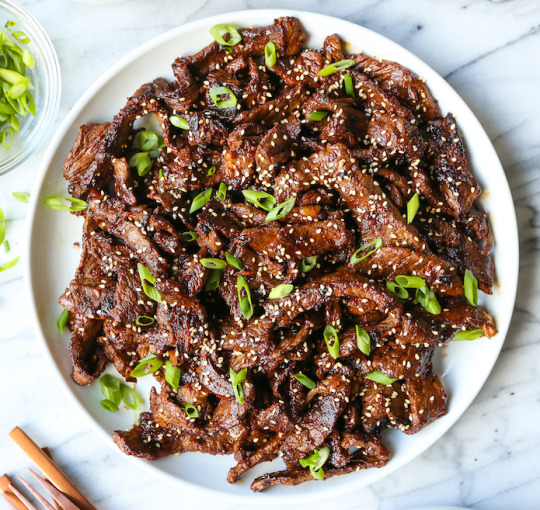
Korean BBQ Tacos with Bulgogi
(Note: I skip the beef and make the sauce (without pear) to go on beefless ground, ready in 5 minutes! Serve on tacos with fresh cilantro, red onion, and/or shredded cabbage)
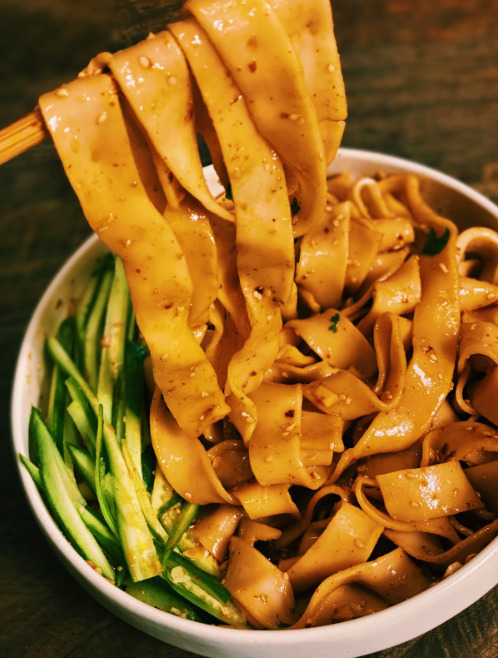
Spicy Garlic Noodles
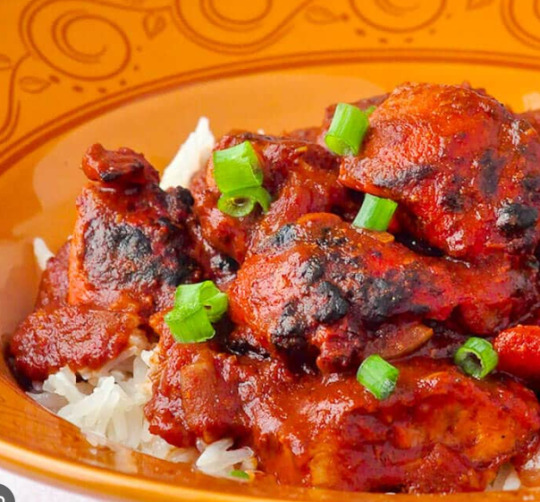
Tikka Masala
(Note: You can make tikka masala plant based by substituting the chicken with cauliflower or chickpeas.)
Wednesday
Ruling planet: Mercury
Mercury is associated with leafy greens, broccoli, cabbage, and other green vegetables.

Roasted Honey Mustard Cauliflower Kale Salad

Creamed Spinach

Buddha Bowls
Thursday
Ruling planet: Jupiter
Grand, expansive Jupiter is celebrated with golden yellow hues.
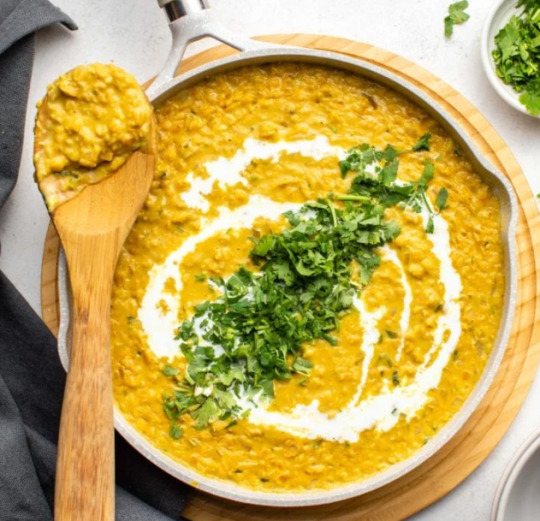
Coconut Curried Lentils

Spaghetti Squash

Banana Muffins
(Add 1/2 tsp ground cardamom for an aromatic boost!)
Friday
Ruling planet: Venus
For the planet associated with the goddess of love, sweetness rules.

Maple Tahini Sweet Potatoes with Chickpeas
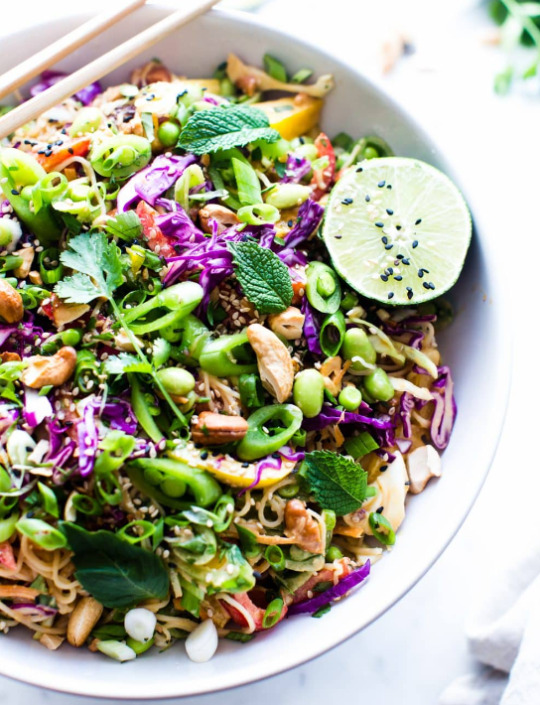
Thai Peanut Noodle Salad

Honey Roasted Chicken and Figs
Saturday
Ruling planet: Saturn
Saturn is the planet of stability and discipline, so we look to the base structure of many diets: grains, beans, and starches.

Instant pot Chili Mac
(This plant based chili is best served with cornbread)
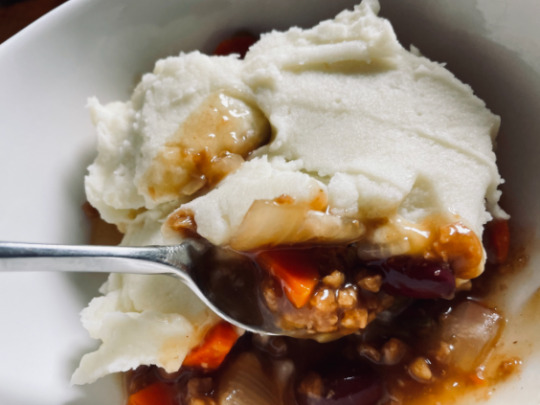
French Onion Shepherd’s Pie

Overnight No Knead Artisan Bread
Sunday
Ruling planet: The Sun
Sunny fruits like lemons, oranges and hot summer foods like corn and tomatoes are associated with the sun.
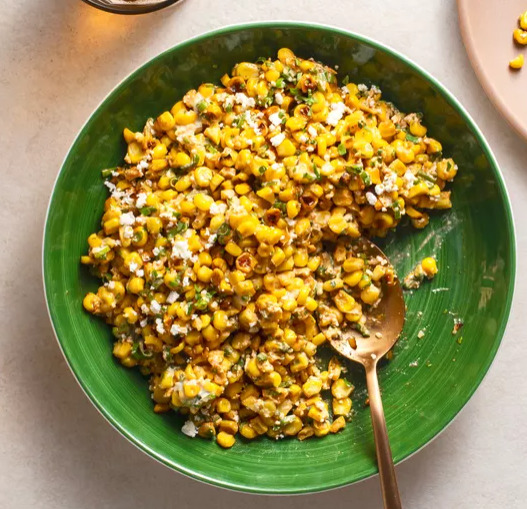
Mexican Street Corn Salad

Orange Ginger Power Bowl

Roasted Cherry Tomato Pasta
(You can also sauté the tomatoes over the stove to avoid using the oven)
I hope you are inspired by this list!
10 notes
·
View notes
Text
TW food, diet, mealplan
I'm still doing the 30 plant foods challenge and I really like it. I'm also taking a probiotic with it and my IBS complaints have really decreased! Really awesome.
The only hard thing is that I'm still struggling eating enough calories. I've been hungry a lot lately, probably also because I've been walking and exercising more. I have a hard time coming up with foods to eat and to actually make myself prepare all the meals (the eating itself is usually fine).
My mealplan for this week (still a work in progress):
- chili sin carne
- oven dish with leek, mushroom and potatoes
- pumpkin soup
- some frozen leftovers of pasta with lentils, salmon and veggies
- frozen pizza (plus adding some spinach to it)
(I tend to not cook every day and then have leftovers, so usually four to five meals last me a week).
Breakfast/lunch options:
- omelette with veggies on toast
- oatmeal with raisins, nuts, fruit, peanutbutter
- banana pancakes
- toast with hummus and bean sprouts
- grilled cheese
Snacks:
- dark chocolate
- popcorn
- hot chocolate
- oatmilk with cinnamon and honey
- granola bars
And I feel a bit embarressed that all of this food will likely still leave me somewhat hungry. I tend to end up buying chips and chocolate to overcome the calorie deficit. I also think I tend to eat smaller portions than many people around me do.
Anyway... let's experiment to see if all these options will help me feel more full this week. Ideas for healthy snacks are welcome! My only limitation is that I don't like sour foods (yoghurt and many fruits are sensory hell for me). I also avoid eating meat (environmental impact, ethics), but I do sometimes eat meat.
16 notes
·
View notes
Text

大家好! After the heavy meal with Mrs T, I ate qing dan (less oil and salt). A stall selling mixed dishes opened at the food court near the office; curious, I asked if they sold steamed fish. They did - I ordered that, firm tofu with leek, hairy gourd stirfried with eggs and mushrooms to go with zhou (porridge). There wasn't much gravy nor sauce, so the meal was much less salty and oily than it could've been; this suited me just fine, because I tasted the freshness of the fish and veggies!

The food was so qing dan, nutritious and tasty that I returned the next day. Besides steamed fish, I chose egg tofu, mixed veggies with hei mu er (wood ear mushrooms) and stirfried bean sprouts to go with zhou. In order to help you understand why I - and many Asians - choose not to solely focus on super foods, I'm sharing the nutrition profiles of some veggies eaten in this post. Different food stalls sell various types of fish, so I don't always eat the same old thing when dining out. This way, I give my body as many nutrients as possible.

Speaking of different food stalls, I explored a little further from my neighbourhood and ended up at a coffee shop. They didn't have steamed fish but assam fish is also delicious, so I ordered that, tomato scrambled eggs, stirfried kan choy (celery) with hei mu er and stirfried green beans with pork mince to go with zhou. Besides being very filling, the food was also yummy. I'll return to see what meals the other stalls have to offer. Pa likes hearing about my moderately healthy meal adventures and we chat about nutrition often so this gives us something more to talk about.

On a whim, I decided to walk to catch up with Grace and Douglas instead of relying on car or public transport. The hour-long journey tested the cushioning of the soles of my new Anta shoes. Good news: my flat feet didn't hurt at all and, given that my country IS the Garden City, there was green and colour along the way. I was amazed by the pale green tree, which was almost silvery in the sunlight. Life moves at a very hectic pace here; being able to appreciate flora and fauna is a luxury that I cherish.





youtube
youtube
My stomach was growling by the time I neared my friends' residence. Time for shui jiao tang mian (shrimp and pork wanton soup noodles) before going up to their flat. Already a delicious nutritionally balanced meal on any given day, the dish tastes even better when one is hungry! To eat qing dan, I skipped the soy sauce, adding only green chilli seasoned in vinegar to the clear broth. Why shui jiao tang mian is moderately healthy: 1. Protein, veggies (choy sum) and carbohydrates; 2. Less oil; and 3. Hydration hydration hydration.

Now that you have basic understanding of the nutrition profiles of some of the foods we enjoy in Asia, perhaps the recipe videos I share will be more helpful when you want a break from grain bowls, salads and chicken breast with broccoli/cauliflower or you just want to eat moderately healthy. The key word is: balance - nutritional balance, balance of oily foods and qing meals as well as balance of food with the exercise I do. I don't have the time to count calories/macros so this is more sustainable to me and, at 46yo, my blood pressure remains steady at 120/80, my triglycerides are normal and I'm not taking any long term medications. You can follow some 'experts', whose advice resulted in worsening health statistics in some countries, or you can just give what Asians here do a try. Like they say, you can't keep doing the same thing and expect different results; it's all up to you. 下次见!
4 notes
·
View notes
Note
Fact for fact: Merces is an adequate cook if he is given clear instructions or a recipe to follow. If he is told to improvise... well, the result is edible but not very delicious (spices, how do they work?).
Fact for fact: Tell me a fact about your OC and I will respond with a semi-related fact about mine.
Prompt 4: Off the Hook
Who: Zhah'ra Savaptha and Merces Ninthstar (belongs to @ever-searching)
What: Extenuating circumstances leave Zhah'ra and Merces in charge of dinner.
Where: The Stray Inn, South Shroud
When: some time ago, in autumn, soon after the cold room had been installed
Content notes: food, obviously
Music: "Into the Light" by Off the Hook (Splatoon 2) (YouTube, lyrics, such as they are); bonus: "Soup Song" performed by Cisco Houston (YouTube, lyrics)

Zhah'ra stopped short in the doorway to the Stray Inn's kitchens, tail swaying uncertainly as he surveyed the bowls and baskets arrayed on the table. When Ulfric, the innkeeper, had been called away on an emergency, Zhah'ra hadn't thought twice about agreeing to help finish assembling dinner, especially when Ulfric had reassured him that it was all gathered together, and basically all he and Merces would need to do was cut up the ingredients and throw them in a pot. The broth was already simmering on the stove, even.
But this was... a lot of ingredients.
At least the things themselves were familiar enough. He recognized the unavoidable apples from the inn's orchard, and a few pumpkins with their ribbed green-and-orange skins. White beans sat soaking in a bowl. A double handful of celery stalks were arranged in a jar of water like the star's crunchiest flower arrangement. Beside them, a veritable mountain of some green, leafy something — two different green, leafy somethings? — stood heaped on a stack of towelling, still glistening with moisture. Lastly, there was a bundle of what Zhah'ra was pretty sure were leeks, with their thick, white stems and dark green tops. Maayan's exasperated recounting of too many bowls of the sandy, fibrous vegetables played in his mind.
It was just the two of them. The inn had no guests at the moment, and most of the residents were away. He glanced over the intimidating pile of produce, trying to imagine how it might fit together into a cohesive dish.
"Merces..." he said slowly, turning to look at his erstwhile brother-in-arms. "What would you say to having bread and butter for dinner?"
—
Zhah'ra can generally manage to competently get nourishment into himself, if not with very much flair. At this point in time, he had really only recently begun learning to cook, so he had little confidence in his skills when it came to making food others would find palatable.
On top of that, while he's not a strict carnivore, he does feel much better when his diet has higher proportions of meat and fish. He is... markedly unenthused about plain vegetable stew — especially after his stint in Rhalgr's Reach, where a pottage of greens was the usual fare from the communal cookpot. Ulfric's cooking typically circumvents this objection, but "having a bowl of delicious something placed in front of you" and "having to get there yourself from raw ingredients" are two very different propositions!
—
Apparently the perfectionism-busting exercise for me this year is being gentle about artificial deadlines. I started trying to write this soon after prompt 6 came out on Wednesday (i.e., right on schedule for my modified challenge), but I was struggling so much with my usual nonsense that I kept having to go rest. Maybe 2-3 prompt fills a week is too ambitious? (When I ask myself this, my immediate internal response is "well, yeah, that sounds like a lot?") I'm having fun, though! >:(
As an aside, the intended end point for all of those ingredients was pumpkin soup with leeks and white beans. I've never made this particular recipe, but I think it sounds delicious. (I have made this one, beans omitted, and it is.)
#ffxivwrite#ffxivwrite2023#ffxiv screenshots#ffxiv rp#mateus#mateus rp#meme#answers#fact for fact#zhahra#merces ninthstar#the stray inn#food mention#don't worry none of it went to waste#they put it all in the cold room and it lasted fine#and Zhah'ra went fishing to provide for the next few meals XD#thank you for the ask!#menord
1 note
·
View note
Text

I posted 255 times in 2022
That's 255 more posts than 2021!
10 posts created (4%)
245 posts reblogged (96%)
Blogs I reblogged the most:
@kindly-whisper-tolkien
@kindly-whisper-norbury
@iheartthilbo
@smoking-old-toby
@bagginshieldhappiness
I tagged 12 of my posts in 2022
#bagginshield - 10 posts
#the hobbit - 8 posts
#thorin oakenshield - 7 posts
#thilbo - 7 posts
#bilbo baggins - 7 posts
#incorrect bagginshield - 3 posts
#incorrect quotes - 3 posts
#incorrect - 2 posts
#recipe - 2 posts
#food - 2 posts
Longest Tag: 39 characters
#i think i know what your answer will be
My Top Posts in 2022:
#5
Bagginshield Lives
I have, unfortunately, noticed a lack of active Bagginshield blogs out there in Tumblrland lately... so, after having both my main (@kindly-whisper-norbury) and Tolkien (@kindly-whisper-tolkien) Tumblrs since at least 2016, writing Bagginshield Fanfic since 2014, and shipping Bilbo x Thorin since 2012... I have finally, in 2022, made this... an actual Bagginshield-centric blog.
Just a heads-up: I will be going back through my Tolkien Tumblr and grabbing all the old Bagginshield posts to reblog here, so expect to see some old stuff (which is actually kind of neat for the young'uns in the fandom!) along with the new!

87 notes - Posted November 15, 2022
#4
A Bagginshield Cookbook
Recipe #2
Leek & Potato Soup

Although Thorin, like all Dwarves, is fond of meat in most forms, one of his favorite comfort foods is Leek & Potato Soup. He developed a taste for it after he and his people settled into a simple life in the Blue Mountains, where it was discovered that wild leeks were plentiful in the woods that surrounded the foothills. Potatoes, of course, were already a staple of the Dwarven diet, being easy to both grow and store.
When Bilbo learned of Thorin's love of the soup, he let him in on his cousin Mirabella's "secret" recipe (known to only a few dozen family members, friends, and neighbors... as well as the owner of the Golden Perch Inn, the Butturbur family of Bree, and the librarian of Brandy Hall). Mirabella's version was, of course, made with larger and milder cultivated leeks rather than the spicier ramps, and so she included onion in the recipe to add a bit more depth of flavor.
The soup quickly became an often-shared simple supper for Thorin and Bilbo on cool evenings, usually accompanied by a loaf of warm bread for dipping.
------
This makes a fairly large batch, enough even to feed my family of seven! It should be easy enough to halve, though. Please feel free to take the recipe and distribute it as you like; no credit is necessary.
Leek & Potato Soup
4 Tbsp butter
6 cups cleaned and sliced leeks
2 cups diced onion
5 lbs (about 12 cups) peeled & diced potatoes
8 cups chicken broth
1 1/2 cups cream, milk, or evaporated milk
Salt, pepper, & green onions
Melt the butter in a large pot over medium heat, then sauté the leeks and onions for about 10 minutes or until soft. Add the potatoes and broth. Bring to a boil over medium-high heat, then reduce to low and simmer for about 20 minutes or until the potatoes are very soft.
Add the cream, milk, or evaporated milk. You can either leave the soup chunky, partially mash it, or (as I prefer) blend until smooth with an immersion blender.
If you like, season with salt, pepper, and green onions.
------
(Check out my "food" tag for more recipes. There's not much yet, but there will be soon!)
118 notes - Posted December 4, 2022
#3
A Bagginshield Cookbook
Recipe #1
Seed-Cake

See the full post
146 notes - Posted November 22, 2022
#2
Thorin: Bilbo asked me to get him a drink. What should I bring him?
Dwalin: I don't know. Why ask me?
Thorin: He said to surprise him.
Dwalin: Serve it to him naked.
191 notes - Posted November 23, 2022
My #1 post of 2022
We knew it was coming.
Before BOTFA came out almost eight years ago, we knew what was going to happen. The people who had read The Hobbit knew, the ones who had absorbed the information through popcultural osmosis knew... the ones who had sought out spoilers, the ones who remembered from watching LOTR that Old Bilbo had become reclusive and antisocial living in Bag End... we all knew what was going to happen in the Battle of the Five Armies...
We knew it. And yet we still showed up to the Bagginshield party. We started making fix-it fics and art before there was, technically, anything to fix. We came up with headcanons and what-ifs and AUs and consumed as much Bagginshield as possible before BOTFA was released.
And so we went to the movie knowing Thorin would succumb to the dragon sickness, knowing he would send Bilbo away in anger, knowing he would die, knowing that Bilbo would mourn him then go back to an empty home.
We knew it was coming, and we knew it was going to hurt. And man... did it hurt...

And hurt...
See the full post
354 notes - Posted November 18, 2022
Get your Tumblr 2022 Year in Review →
5 notes
·
View notes
Text
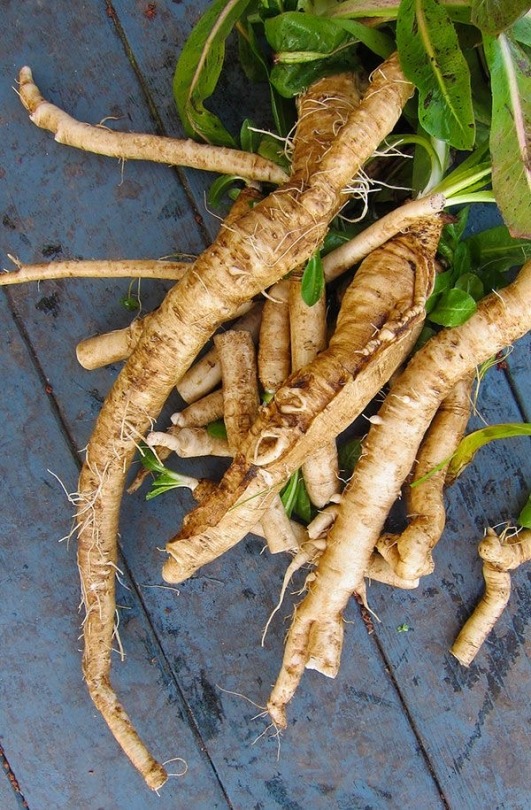
Prebiotic foods are non-digestible fibers that serve as food for beneficial bacteria in the gut. By promoting the growth of beneficial bacteria, prebiotics help support a healthy gut microbiota and overall gut health. Some of the best prebiotic foods include:
1. Chicory root: Chicory root is one of the richest sources of inulin, a type of prebiotic fiber that promotes the growth of beneficial bacteria in the gut. It can be added to salads, soups, or used as a coffee substitute.
2. Garlic: Garlic contains fructooligosaccharides (FOS), a type of prebiotic fiber that feeds beneficial bacteria in the gut. Incorporating garlic into your cooking can help support gut health.
3. Onions: Onions are rich in inulin and FOS, making them excellent prebiotic foods. Raw onions are particularly high in prebiotic fibers.
4. Leeks: Leeks are a good source of inulin, a prebiotic fiber that helps nourish beneficial bacteria in the gut. They can be used in soups, salads, and stir-fries.
5. Asparagus: Asparagus contains inulin and other prebiotic fibers that support the growth of beneficial bacteria in the gut. It can be roasted, grilled, or added to salads.
6. Bananas: Bananas are a good source of resistant starch, a prebiotic fiber that fuels the growth of beneficial bacteria in the gut. Ripe bananas are higher in resistant starch.
7. Apples: Apples contain pectin, a type of prebiotic fiber that supports gut health by feeding beneficial bacteria. Eating the skin of the apple can provide additional fiber.
8. Oats: Oats are a rich source of beta-glucans, a type of prebiotic fiber that supports gut health. Eating oatmeal or adding oats to smoothies can help promote the growth of beneficial bacteria.
These prebiotic foods help nourish beneficial bacteria in the gut, promote a healthy gut microbiota, and support overall digestive health. Including a variety of prebiotic-rich foods in your diet can help maintain a balanced and diverse gut microbiota, which is essential for overall well-being.
#food for thought#comfort food#fast food#food fight#healthy food#food photography#foodie#food#foodpics#foodlover#japanese food#foodmyheart#tw food#lunch recipes#pasta recipes#pasta recipe#salad recipes#soup recipe#recipe#healthy salad recipes#recipies#recipes#cozy autumn#cozyhome#cozy living#healhtylifestyle#healthy lunch ideas#healthy lunch#healthy diet#healthy
0 notes